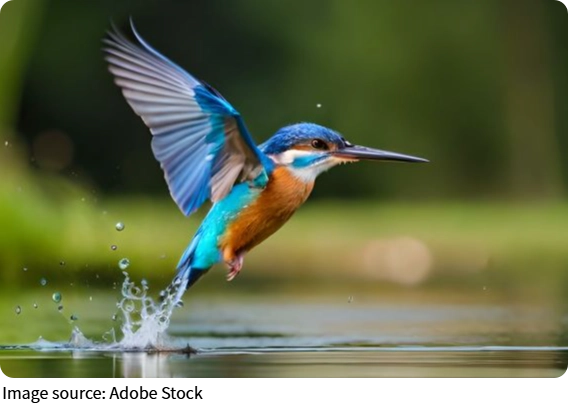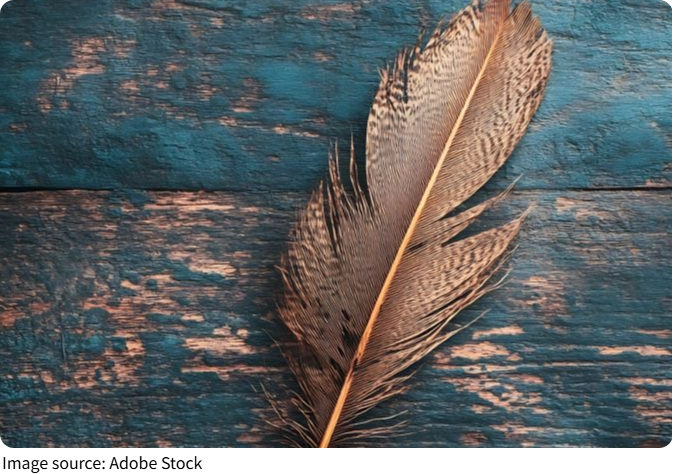Feathers: Smart Design

Hey Lykkers! Ever paused to admire the shimmer of a peacock’s train or the silent glide of an owl? All that magic comes down to one thing: feathers.
They’re not just pretty accessories—feathers are some of the most sophisticated structures in the animal kingdom. From soaring high in the skies to surviving icy winters and attracting mates with flair, birds rely on feathers for just about everything.
In this guide, you’ll uncover why feathers are way more than fluff. We’ll explore how they help birds defy gravity, stay cozy, and express themselves in stunning ways. Get ready to appreciate our feathered friends with new eyes!
Part 1: Built to Fly, Shield, and Shine
Feathers may look delicate, but they’re masterworks of engineering. Let’s take a closer look at what they do and how you can think about their amazing design.
The Secret to Flight
Flight feathers—especially those on wings and tails—are made for performance. They’re stiff, yet flexible enough to bend in the wind. When birds flap, these feathers act like airfoils, catching and slicing through air with precision.
If you were holding a flight feather, you’d notice how light it is, but also how strong the central shaft feels. That shaft supports a network of tiny interlocking barbs that keep the feather smooth and aerodynamic—unless a bird ruffles its feathers or goes through molting.
Nature’s Cozy Coat
Now, peek beneath the top feathers and you’ll find downy ones underneath. These are soft, fluffy, and perfectly designed to trap air close to the body. If you’ve ever watched a sparrow puff up in winter, it’s actually fluffing those feathers to hold in more warmth.
Feathers help regulate temperature, keeping birds warm in cold winds and cool under the summer sun. Next time you're out birdwatching, think of every puffed-up bird as an expert in natural insulation.
Displaying Style and Status
Some feathers go way beyond practicality. Think of a flamingo’s pink glow or a bird of paradise’s elaborate dance moves. Feathers are used in all sorts of displays—for attracting mates, signaling mood, or even warning off rivals.
You might notice a bird raising a crest or fanning its tail. These moves aren’t just for show—they’re forms of communication, and feathers are the perfect medium.

Part 2: Exploring Feather Forms and Functions
Now that you know the basics, let’s have some fun exploring the incredible diversity of feathers and how birds use them in unique ways. Ready for a deeper dive?
Feathers for Every Job
Not all feathers are the same—and that’s where things get fascinating. You’ve got contour feathers that shape a bird’s body, semiplumes that provide fluff and support, and even tiny filoplumes that act like sensors, helping birds adjust their feathers while flying.
If you watch a bird preen, you’re seeing it care for all of these types—zipping barbs back together, removing dirt, and spreading natural oils. It’s not vanity; it’s smart self-care.
The Color Code
Feather colors aren’t just pigment—they often come from microscopic structures that bend and reflect light. That’s why hummingbird feathers can look like emeralds from one angle and sapphire from another.
Birds don’t just wear colors—they use them. Males may flash bright hues during courtship while females may stay muted to blend into nesting spots. Some species even molt into different colors depending on the season.
Feathers in Culture and Curiosity
Humans have always been drawn to feathers, too. From ancient symbols to modern science, feathers continue to inspire. You might find artists using feather motifs or engineers designing materials based on feather microstructures.
If you ever spot a feather on a walk, pause and admire its intricate design. Even a simple pigeon feather is full of surprises when you look closely.
Feathers do so much more than cover birds—they help them fly, stay warm, and stand out. From their hidden layers to their dazzling displays, feathers are nature’s perfect blend of beauty and function.
So Lykkers, next time a bird swoops by or preens on a branch, take a moment to admire those marvelous feathers. They’re silent storytellers, woven with purpose and wonder.
-
 Coronary Spasm: Cardiac!Tight Pain With Clear Tests? What's Hiding In Plain Sight May Surprise You!
Coronary Spasm: Cardiac!Tight Pain With Clear Tests? What's Hiding In Plain Sight May Surprise You! -
 Brain Fog: More Than Tired!Brain Fog Hits Hard! Could This Be More Than Just Feeling Tired? Find Out Now!
Brain Fog: More Than Tired!Brain Fog Hits Hard! Could This Be More Than Just Feeling Tired? Find Out Now! -
 Dehydration: Metabolism?Is Lack Of Water Slowing Your Metabolism?! See What Medical Experts Say About The Link!
Dehydration: Metabolism?Is Lack Of Water Slowing Your Metabolism?! See What Medical Experts Say About The Link!